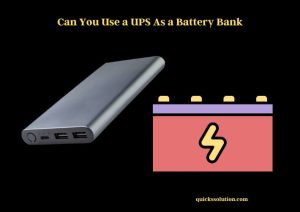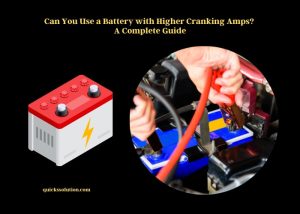Published on: July 23, 2023
Written by John Stevens / Fact-checked by Hashim Manna
Yes, it is possible to revive dead electric wheelchair batteries, albeit with certain limitations.
Starting with the basics, the life expectancy of an electric wheelchair battery primarily depends on its usage and maintenance. Typically, these batteries last for 1 to 2 years before requiring a replacement. However, factors like overcharging can adversely affect this lifespan. Overcharging a wheelchair battery often leads to decreased capacity and, ultimately, failure.

Testing the wheelchair battery is a critical step in determining if it can be revived. If the battery’s voltage is significantly lower than its rated output, it might be recoverable. On the other hand, if the battery fails to hold a charge altogether, it likely needs to be replaced.
A variety of charging options exist for wheelchair batteries. Most users prefer the specific wheelchair battery charger that comes with the device. It is designed to provide the optimal charge and prevent damage. Nonetheless, in some cases, it might be feasible to use a car charger, but it’s generally not recommended due to the risk of overcharging or damaging the battery.
Instances of wheelchair batteries not charging, like in a quantum wheelchair, could be due to multiple reasons. It may be a result of an exhausted battery, issues with the charger, or a fault in the wheelchair’s electrical system.
Moreover, some creative methods to charge a wheelchair battery, like charging a scooter battery without a charger, have been employed by users in dire situations. This can be done by connecting the battery to another working scooter or vehicle battery with the same voltage. Yet, this technique should be a last resort and performed with caution due to the potential safety risks involved.
Remember, regular and correct charging habits are key to extending the life of an electric wheelchair battery. By taking steps to prevent overcharging and testing the battery regularly, one can maintain optimal performance and possibly even revive a seemingly dead battery.
Reconditioning Wheelchair Batteries
Reconditioning your wheelchair battery can be a useful strategy if it has stopped accepting a full charge. One straightforward method involves using an external charger.
External Charging Process
Employing an External Charger
One can employ an external charger to restore the wheelchair battery. Connect your external charger and allow it to charge overnight.
Overnight Charging
Overnight charging allows the battery to attain a full charge, provided it has the capacity to do so. This can often help recover batteries that are underperforming but not completely dead.
Battery Testing and Overcharging
Testing Your Wheelchair Battery
Testing your wheelchair battery regularly is beneficial for assessing its health. If the battery’s voltage is notably less than its stated output, it’s possible that the battery could be revived. Conversely, if it fails to hold a charge, replacement may be inevitable.

Overcharging Risks
Overcharging a wheelchair battery can significantly shorten its lifespan. It can cause decreased capacity and, in worst-case scenarios, total battery failure. Thus, overcharging should be avoided where possible.
Charging Methods and Their Impact
Different charging options are available for wheelchair batteries, each impacting the battery’s life differently.
Wheelchair Battery Charger
Typically, using the designated wheelchair battery charger is the best choice. These chargers are specifically designed to supply the correct voltage and prevent potential damage to the battery.
Using a Car Charger
Charging with a car charger is also an option, but it comes with risks. Due to differing voltage requirements, there’s a higher chance of overcharging or damaging the battery. It should only be used as a last resort.
Potential Charging Issues
Quantum Wheelchair Charging Problems
For instance, quantum wheelchair users may face challenges if their wheelchair isn’t charging. This could be due to a depleted battery, charger defects, or problems with the wheelchair’s electrical circuitry.
Charging without a Charger
Some users resort to charging a scooter battery without a charger. This unconventional method involves connecting the battery to a functioning scooter or vehicle battery with the same voltage. This should be treated as an emergency measure due to potential safety hazards.
The following table provides a summary of these points:
| No. | Subject | Elaboration |
| 1 | External Charging Process | Use an external charger and charge overnight |
| 2 | Battery Testing and Overcharging | Regularly test the battery and avoid overcharging |
| 3 | Charging Methods | Utilize specific wheelchair battery charger or car charger in emergencies |
| 4 | Potential Charging Issues | Be aware of issues like quantum wheelchair not charging or charging without a charger |
Alternative Solutions: When Revival is Not an Option
Despite best efforts, some electric wheelchair batteries may not be revivable. In these cases, alternative solutions are essential.
Replacement Battery
The most immediate solution to a dead electric wheelchair battery is acquiring a replacement battery. New batteries guarantee top performance and reliability. They offer peace of mind, knowing your mobility is not at risk.
Regular Battery Maintenance
Maintaining your wheelchair battery on a regular basis may reduce the need for revival or replacement. Routine maintenance includes cleaning battery terminals, ensuring proper charging practices, and avoiding extreme temperatures.
Backup Battery
Having a backup battery can be invaluable. It ensures the wheelchair user won’t be left immobilized due to a sudden battery failure.
External Battery Chargers
Employing an external battery charger can help maximize the lifespan of the battery. This device can balance charge levels, thereby reducing strain on the battery and enhancing its longevity.
| Alternatives | Benefits |
| Replacement Battery | Ensures optimal performance |
| Regular Battery Maintenance | Prolongs battery life |
| Backup Battery | Guarantees mobility in case of failure |
| External Battery Chargers | Enhances battery longevity |
Legal and Warranty Considerations
Addressing dead electric wheelchair batteries also requires awareness of legal and warranty considerations.
Warranty Terms and Conditions
Before attempting to revive a dead battery, reviewing the warranty terms is a priority. Some warranties may become void if non-professional attempts are made to repair or revive the battery.
Professional Assistance
To avoid invalidating the warranty, professional assistance should be sought. Professionals have the skills and tools necessary to safely revive or replace the battery without violating warranty terms.
Legal Compliance
Compliance with local laws and regulations surrounding battery disposal and replacement is also key. These laws are in place to ensure safety and environmental protection.
| Considerations | Implications |
| Warranty Terms and Conditions | Might void the warranty if improperly handled |
| Professional Assistance | Safeguards warranty and ensures expert handling |
| Legal Compliance | Ensures safety and environmental protection |
FAQs
Can I Use a Car Battery on a Mobility Scooter?
It is not recommended to use a car battery on a mobility scooter. Car batteries and mobility scooter batteries have different power specifications, and using the wrong type could damage your scooter or reduce its performance.
How Often Should I Charge My Power Wheelchair?
It’s recommended to charge your power wheelchair battery every day if used daily. If the chair is not used every day, it’s best to charge the battery after each use to ensure it’s always ready.
Can You Charge Mobility Scooter Batteries with a Car Charger?
While technically possible, using a car charger to charge a mobility scooter battery isn’t recommended. The voltage requirements for these batteries differ, and there’s a risk of overcharging or damaging the battery with a car charger.
How Long Does It Take to Charge an Electric Wheelchair?
Typically, it takes about 8 to 12 hours to fully charge an electric wheelchair battery. This can vary based on the battery’s age and condition.
How Long Does an Electric Wheelchair Battery Last?
On average, electric wheelchair batteries last between 1 to 2 years. However, this depends on how often the wheelchair is used, how well the battery is maintained, and the quality of the battery itself.
Can You Overcharge a Wheelchair Battery?
Yes, overcharging a wheelchair battery is possible and can lead to decreased battery capacity or even failure. To avoid this, always follow the manufacturer’s charging instructions.
Where Can I Find a Wheelchair Battery Charger?
Wheelchair battery chargers can usually be purchased from the wheelchair manufacturer, medical supply stores, or online retailers. Be sure to choose a charger that is compatible with your specific wheelchair model.
Read more:




